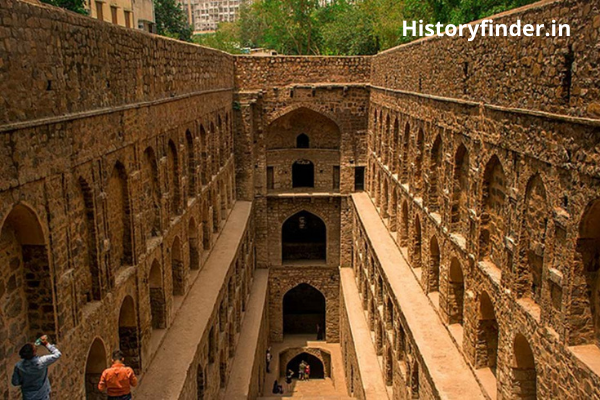The Portuguese arrival in 1498 led by Vasco da Gama never intended a peaceful trade relation build up. Rather the Portuguese voyage always sought dominance in the Arabian sea. The Portuguese Zamorin battles during early 16th century mark the first sign of European dominance around Indian soil. Undoubtedly, the Portuguese intention was to gain unconditional control over the Malabar coast and the spice trades. Hence, defeating the Zamorin, the supreme authority of the Malabar coast and spice trades, would automatically fulfill their purpose.
Kozhikode, former Calicut, was the most important commercial city in Malabar Coast that time. The Arabs had established trade there about 600 years earlier. So, a large community of Muslim merchants from Egypt and Arabia lived at Calicut, referred as Mappilas or Moplah. Also they were highly influential at Calicut and very close to Zamorin.
Vasco da Gama, during his first arrival, was unsuccessful to secure any trade treaty with the Zamorin. This led to the several tensions around the coast as the Portuguese sought to control powerfully. Vasco da Gama was forced to retreat initially. But his first voyage returned with enough goods that earned him a huge profit. Now imagine, why won’t such enormous profit from an unsuccessful treaty invite successive military invasions?
Early Conflicts: First Luso-Malabarese Wars (1500-1513 CE)
Zamorin actually welcomed Vasco Da Gama as a new foreigner in the city, wishing a flourish in trades. But the conspiracy and hostility shown by Arab merchants during his first arrival to India, led to Portuguese Arab conflicts. Vasco Da Gama returned to Lisbon without securing any trade. But he gathered enough intelligence to prepare strategically for the upcoming Portuguese campaigns.

The Second Voyage: Portuguese Massacre and Retaliation
King Manuel decided to send a larger campaign to India under Pedro Alvarez Cabral. The second Portuguese armada to India, eventually landed at Kozhikode in 1500 CE. Again the Zamorin of Calicut turned down his demand of favorable trade rights. Seeing high Arab influence, Pedro Alvarez seized an Arab merchant ship from Jeddah. This led the beginning of a serious clash between the Portuguese and the Mappilas at Calicut. The guards of Zamorin aided the Mappilas to retaliate, executing about 50 Portuguese merchants at Calicut. Mappilas also invaded the Portuguese factory, killing many more Portuguese including the friars.

Pedro Alvarez bombarded the city in retaliation, the first direct confrontation among the Portuguese Zamorin battles. This induced severe military engagements between the Portuguese and Zamorin at the Arabic and Indian ocean for next few decades. Nevertheless, Alvarez soon received an intelligence that the king of Cochin, an unhappy vassal of Zamorin, seeking independence. Pedro Alvarez hence left for Cochin, looking for an alliance.
First Battle of Calicut (1501 CE)
Portuguese Zamorin conflicts further intensified as King Manuel sent his top-notch commander Jao Da Nova. Obviously, Jao da Nova did not mean friendship anymore, especially the larger ships fitted with guns. Zamorin and his Malabar fleet also prepared for counter attack with more than 180 small size ships. Several European defectors joined local Mappilas and Arab commanders joined the Malabar fleet.
First battle of Calicut is often referred as first battle of Cannanore, a crucial one among First Luso-Malabarese Wars. Da Nova’s tactical brilliance in formation of the line of battle and utilization of ranged artillery proved decisive. Two sides engaged in their first direct battle on 31st December, 1501 and 2nd January in 1502. Da Nova led Portuguese fleet caused severe damage to Malabar fleet and defeated them deliberately in both clashes.
Second Armada of Vasco Da Gama (1502 CE)
King Manuel decided to resend Vasco da Gama, after Da Nova failed to secure a treaty in diplomatic manner. But the second voyage of Vasco Da Gama was even larger, consisting of 20 heavily-armed ships.
The Portuguese Armada, intercepted a large merchant ship coming from Cairo. Deciding to take revenge of Calicut massacre, he plundered and bombed the ship to sink with everyone still on board. Zamorin called Da Gama for a peace talk. But at the same time, he sent several letters to his vassal of Cochin to stop cooperating the Portuguese. Unfortunately, the king of Cochin revealed the letters to Vasco Da Gama. This led to direct battles between Zamorin and the Portuguese. In reaction, Vasco Da Gama bombarded the city, notable as the second Portuguese bombardment at Calicut.
Second Portuguese Zamorin Clash at Calicut (1503 CE)
The second Portuguese bombardment of Calicut made Zamorin more determined to expel the Portuguese from Calicut. He invited Arab naval support to build a larger fleet. Zamorin also hired Arab privateers Khawaja Kassein and Khawaja Amber as his commanders. But their naval war tactics proved insignificant as the Portuguese captured Khawaja Kassein in a broadside clash. The second naval clash thus resulted heavy defeat to Zamorin, including loss of wealth, life and resources.
Invasion of Cochin (1503 CE)
Vasco Da Gama left Cochin giving the charge to Vicente Sodre, to protect Cochin. Sodre also continued raiding the hostile Arabian ship sailing at Red sea. But unfortunately died in a shipwreck. Zamorin promptly sent a large army to Cochin. His army burnt Cochin, killed Narayan, the heir of Cochin kingdom and captured 50,000 men. Trimumpara Raja, the king of Cochin, still refused to handover the Portuguese he sheltered to Zamorin.
Trimumpara and the Portuguese refuged to Vypin island. Zamorin attempted multiple assaults but failed. On the arrival of monsoon and new, substantially large reinforcements from Lisbon, Zamorin eventually withdrew his garrison from Cochin.
Peace Effort (1503 CE)
Ruining trades and leaving merchants forced Zamorin to call for a peace. The recurring Zamorin Portuguese battles also had cut the supply of Indian pepper and other spices from Calicut. Portuguese garrison of Manuel Fort of Cochin also agreed. Zamorin agreed to compensate by supplying 900 caddies of pepper to the Portuguese. The short peace effort soon ended after the first shipment, occurring from an dispute.
Later Battles between Zamorin and Portuguese (1504 – 1509 CE)
In March 1504, Zamorin sent his troop of 50,000 men to invade Cochin again. But only 100 Portuguese and men of Trimumpara with a tricky defense, successfully blocked the invasion. In retaliation, Portuguese commander Lopo Soares de Albergaria bombarded Calicut yet again. Until 1508 CE, Portuguese Zamorin battles continued but still remained inconclusive. In 1509, the Portuguese defeated a joint fleet of the Gujarat Sultanate, the Mamlûk Burji Sultanate of Egypt, and Zamorin.
Last Phase of First Luso-Malabarese Wars (1510 – 1513 CE)
In November 1509, King Manuel sent Dom Fernando with his orders to destroy Calicut. On the night of 3rd January, 1510 CE, Fernando plundered the palace of Zamorin. Fortunately, Zamorin himself was out of town. But while Portuguese tried to return to their ships, the Nairs of Malabar assaulted. About 300 Portuguese died with another 400 injured. About 1000 casualties occurred at Zamorin’s side as well.
On failure of Calicut invasion, The Portuguese rather chose to reduce direct campaigns to Calicut. But decided block any access to Calicut. The blockade of Calicut (1510 – 1513 CE) resulted sharp downfall Muslim trades sailing to the Red sea. In between, Zamorin attempted peace talks with the Portuguese but proved indecisive under Muslim influence. But his heir, unfortunately a pro-Portuguese, decided to poison him persuaded by the Portuguese. The assassination of Zamorin of Calicut brought stoppage on the Portuguese Zamorin battles, ending the first Luso-Malabarese Wars.
Portuguese Zamorin Peace Treaty (1513 CE)
New Zamorin signed a Peace treaty with the Portuguese. King Manuel ordered to build a fort at Calicut which was commissioned same year. The Muslims of Calicut, who still were against the peace treaty, were expelled. The kings of Cochin and Cannanore signed unwillingly, after Portuguese intervention. Portuguese viceroy of India, Afonso de Albuquerque left for Lisbon. Zamorin sent his two ambassadors with Albuquerque, along with his letter and impressive gifts. For next two decades, both parties honored the treaty.
Siege of Calicut (1526 CE)
In 1522 CE, new Zamorin ascended the throne of Calicut. Differences between the Portuguese and Zamorin arose. On 26th March, Portuguese commander Duarte de Menezes attacked and destroyed a fleet of the Zamorin which triggered hostility again. Zamorin prepared his men and on 3rd June attacked the Portuguese fort of Calicut and laid a siege. Only 300 Portuguese kept defending the fort while reinforcements from Goa arrived in September. But continuous hostility from Zamorin forced the Portuguese abandon the fort and leave Calicut. Zamorin eventually captured the Portuguese fort of Calicut.
Siege of Chaliyam (1571 CE)
Zamorin laid siege of Chaliyam proved conclusive for long sustaining Portuguese Zamorin battles. The siege began 14th July 1571 blockading the Portuguese fortress of Chaliyam. 40 cannons took position around the Chaliyam fort and began firing. Placing an artillery battery on the mouth of the river proved decisive. It made easier for the naval fleet of Zamorin to successfully blockade the Portuguese reinforcement vessels from Portuguese garrisons nearby.
Portuguese soldiers soon started realizing crisis of food and other necessary resources to survive. Zamorin did not entertain any peace talk efforts from the Portuguese. By November 1571, the Portuguese completely ran out of food and was forces to surrender. Zamorin eventually agreed to allow the Portuguese a safe passage to escape, against full surrender of the fort of Chaliyam.
Aftermath of the Portuguese Zamorin Battles
The Portuguese defeat at Chaliyam was a major blow to the Portuguese dominance in northern Kerala. It certainly disrupted their control over the spice trade routes alongside weakening of their naval dominance in the region. The Portuguese military campaigns were limited to Cochin, Goa and few other strongholds. On the other side, the victory over Chaliyam fort was a huge moral booster for Zamorin of Calicut. The success of Zamorin also influenced other local rulers to resist Portuguese dominance. Eventually, free trade of Indian spices resumed at Calicut after 70 years, under full control of Zamorin.




